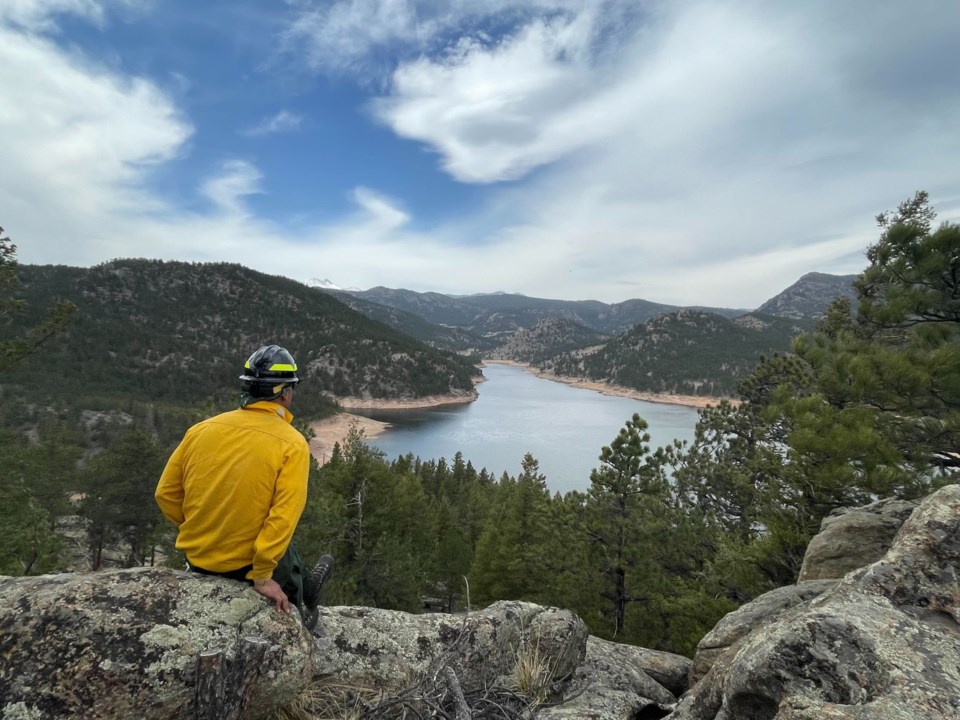The helicopters seen flying to and from Longmont airport this month were part of the state’s fire suppression training with the Colorado Army National Guard.
The Colorado Division of Fire Prevention and Control has been conducting interagency helicopter-based fire suppression and classroom training with the Colorado, Oklahoma and Nebraska National Guards, Boulder Fire-Rescue, Longmont and the U.S. Forest Service.
“This is a scenario-based training where we actually set up a heli-base (and) set up folks on the ground out there so they can communicate with those folks in the air,” explained Vince Welbaum, DFPC aviation unit chief.
He said the annual training tries to make scenarios as real as possible, starting with briefings in the morning to identify tactical missions, working with different types of water sources and simulating various fire responses.
Aircraft took off from Vance Brand Municipal Airport and the Buckley Space Force Base to practice at three different reservoirs during the training, which wrapped up this week.
The exercises included target aerial water delivery practice at Chatfield State Park in Littleton, Rocky Mountain Arsenal National Wildlife Refuge in Commerce City and the Button Rock Dam at Ralph Price Reservoir, west of Longmont. Welbaum said the training is a stair-step approach, starting with flatter terrain that’s easier for pilots to learn.
“Then they transition to Button Rock, which is a little more technical,” he said. “We have people out there guiding them in and working with them that way. So it’s a little more confined and puts them in a little more critical arena.”
The interagency training went on for three weeks this year instead of two, allowing for more practice.
“Obviously, the more we do it the better we get,” Welbaum said.
The Colorado National Guard is a state asset that works with the DFPC on fires the state is responsible for fighting. Federal partners like the U.S. Forest Service and Department of Interior agencies require cooperative agreements with the state, part of which is to make sure pilots are well trained in aviation fire suppression.
“Colorado is one of those states that do a lot of good work together with the National Guard along with our federal partners,” Welbaum said. “We have a huge emphasis on this training. A lot of the other states don’t.”
Air support’s ultimate goal is to aid the firefighters on the ground to make their work as safe as possible, Welbaum explained.
The state has already been busy with fires this year, with Welbaum pointing to the Marshall fire and a summer forecast that is not looking optimistic.
“It’s a transition to the fact that we’ve got a super dry season already,” he said. “Really, most of the time the fire season is determined by the spring moisture, how much we get, and we’re not getting anything. Well, we’re not getting much anyway.”
As fires grow bigger and more destructive year round in Colorado, the state has been building up aviation assets to fight fires. Just five or six years ago, the state had only a couple single engine air tankers, and now they have helicopters and additional assistance agreements they can call on as needed.
DFPC is also expecting to get a Fire Hawk helicopter by the end of this year, which Welbaum described as “a Black Hawk on steroids” with a water tank as well.
“We’re stepping up to plan for those large fires,” he said.



